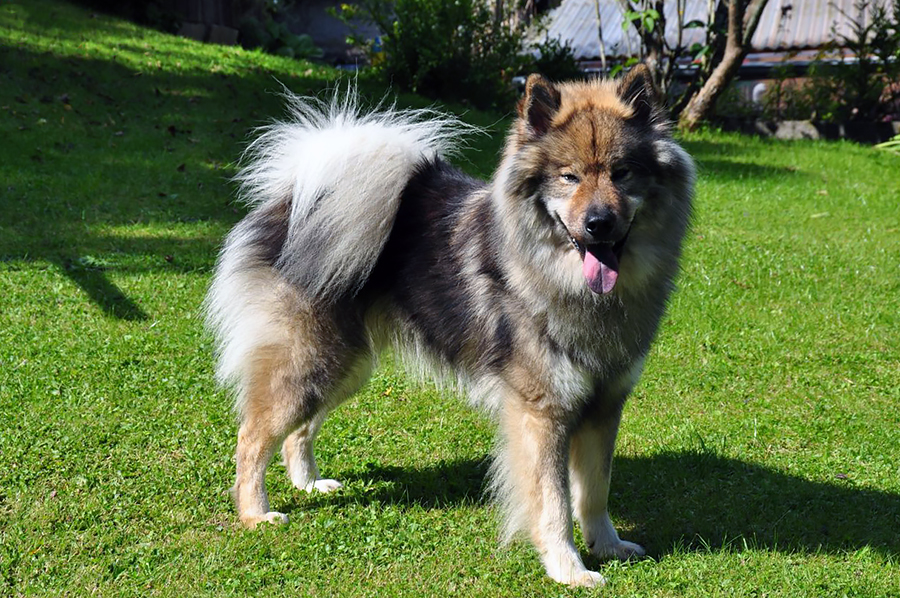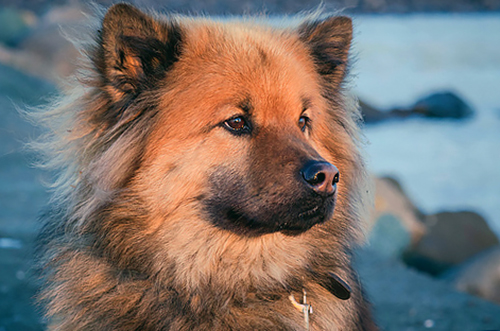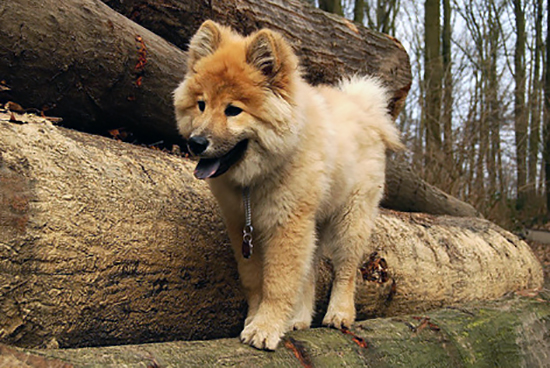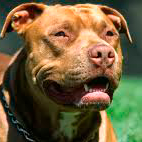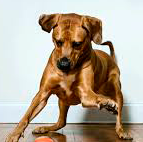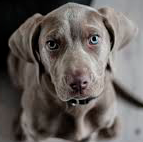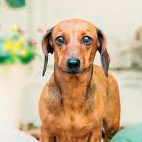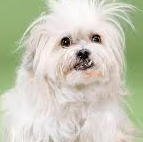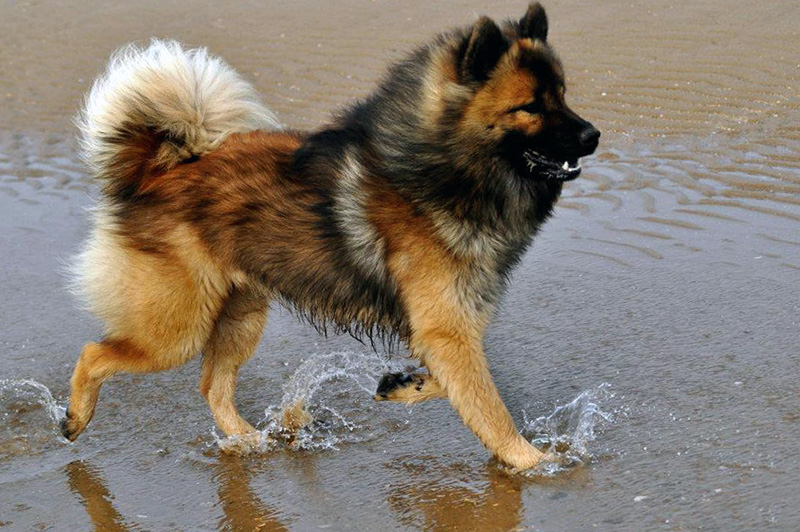
Eurasier Dog Breed
Eurasier Dog Breed pictures ➜
ORIGIN:
Germany.
UTILISATION:
Companion Dog.
BRIEF HISTORICAL SUMMARY
In 1960 a breed was evolved by crossing a Chow Chow and a Wolfspitz. This was first called “Wolf-Chow” and then, after crossing with a Samoyed, was re-named “Eurasier” (Eurasian) and also recognised by the FCI.
GENERAL APPEARANCE: Balanced, well constructed medium sized dog of Spitz type with prick ears and coming in varied colours. Length of coat should be such as still to reveal the body proportions. With medium bone.
IMPORTANT PROPORTIONS
Length of back slightly longer than height at withers. The ratio of length of muzzle and length of cranial region is almost equal.
BEHAVIOUR AND TEMPERAMENT
Self assured, calm, even tempered with high resistance against any provocation. Watchful and alert without being noisy. Very strongly developed link to his family. Reserved towards strangers without being aggressive. No hunting instinct.
For the full development of these qualities, the Eurasian needs constant close domestic contact with his family and understanding, yet consistent training.
HEAD
General: Balanced, not too broad skull. Shape of head seen from above and sideways, wedge-shaped. Bridge of nose and cranial region run parallel.
CRANIAL REGION
Shape of skull: Flat forehead with distinct frontal furrow. Well defined occiput.
Stop: Barely defined.
FACIAL REGION
Nose: Medium size, noseleather with black pigmentation.
Muzzle: Neither too coarse nor too pointed. Tapering towards the noseleather. Straight bridge of nose and ramus of mandible.
Lips: Edges of lips tight with black pigmentation.
Jaws: Strong; broad arch to lower jaw.
Cheeks: Barely pronounced.
Teeth: Strong complete set of teeth (42 teeth conforming to usual tooth formation). Bite either scissor or even. Upper incisors either fit closely over lower incisors or meet. Premolars and molars set in one line without gaps. All teeth must be in vertical position to jaw.
Eyes: Dark, medium size, not too deep set nor protruding. Orbital aperture slightly slanting. Eye-rims with black pigmentation and tight fitting.
Ears: Set apart by about the width of the base of an ear. Medium size and triangular. Prick ears with tips slightly rounded. Tips of ears and centre of stop should form a nearly equilateral triangle.
NECK: Of medium length, in balance with general appearance. Well muscled. Skin on throat tight fitting. Flowing transition to body.
BODY
General: Strong, not too short in back.
Withers: Pronounced.
Back: Firm and straight. Very well muscled.
Loin: Of good length and width, well muscled.
Rump: Straight, broad and strong.
Tail: Straight set on, round and firm, of good thickness, tapering towards the tip. Bushy hair. Carried lying forward over back or bent slightly sideways or rolled up. When hanging down, reaching the hocks.
Chest: Reaching to the elbows with oval shaped ribcage. Forechest well developed without being pronounced. Sternum long, reaching far back.
Lower Line: Slight tuck up.
LIMBS
FOREQUARTERS:
General: Seen from front, straight and parallel in position. Seen from side, moderately angulated. Upper and lower arm of almost equal length.
Shoulders: Well muscled. Lying slightly slanted.
Upper Arm: Medium length, well muscled.
Elbows: Close to chest.
Lower Arm: Medium length, well muscled.
Pastern-joint: Strong.
Pastern: Medium length, quite straight seen from front, seen from side, inclined slightly forward.
Fore-feet: Oval, tight, moderately arched. Strong nails with dark pigmentation. Firm, well cushioned, black pigmented pads. Thick hair between pads.
HINDQUARTERS:
General: Seen from behind, straight and parallel. Seen from side with moderate angulation. Upper and lower thigh of almost equal length.
Pelvis: Slightly slanting.
Upper Thigh: Medium length with strong muscle.
Stifle: Stable, not too straight.
Lower Thigh: Medium length, well muscled.
Hock-joint: Not set too low, stable, neither turning in or out.
Hock (Metatarsus): Good length and breadth, vertical when seen from side.
Hind Feet: Oval, tight, moderately arched. Strong nails with dark pigmentation. Firm, well cushioned pads. Thick hair between pads.
GAIT: Ground covering with plenty of drive and good forward stride.
SKIN: Tight, well pigmented.
COAT
MAKE UP OF COAT: All over the body a thick undercoat and a medium length, loosely lying, harsh top coat. Short coat on muzzle, face, ears and front of legs. Tail, back of front legs (feathers) and hind legs (breeches) covered in long hair. Coat on neck slightly longer than on body, not forming a mane.
COLOUR: All colours and colour combinations are permitted with the exception of pure white, white patches or liver colour.
HEIGHT AND WEIGHT
HEIGHT AT WITHERS: Dogs: 52-60 cm, Bitches: 48-56 cm.
WEIGHT: Dogs: 23-32 kg, Bitches: 18-26 kg.
The balance of the proportions is most important but the ideals to aim for are medium height and weight.
IDEAL HEIGHT AT WITHERS: Dogs: 56 cm, Bitches: 52 cm.
IDEAL WEIGHT: Dogs: 26 kg, Bitches: 22 kg.
FAULTS: Any departure from the foregoing points should be considered as a fault and the seriousness with which the fault should be regarded should be in exact proportion to its degree.
DISQUALIFYING FAULTS:
- Nervousness, shyness, excessive suspiciousness, aggression.
- Ears which flap or pendulous ears.
- Distichiasis (eyelashes arranged in two lines), ectropion, entropion. Eyes set too deep or eyes too small.
- Single or more incisor or canine tooth missing; single or more premolars 3 or 4 missing, or single or more molars 1 or 2.
- Anomalies in bite.
- Kinky tail.
- Strong lack of pigment.
- Lack of correct gender characteristics.
N.B.: Male animals should have two apparently normal testicles fully descended into the scrotum.


